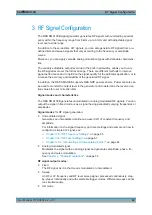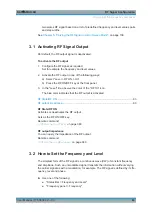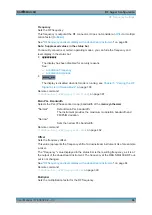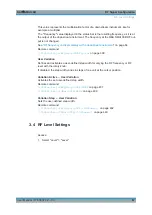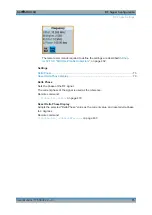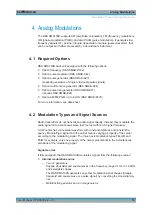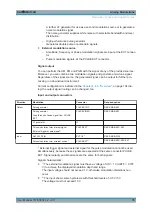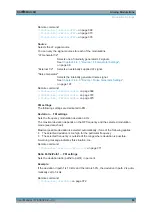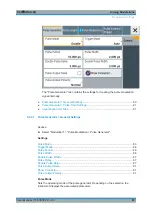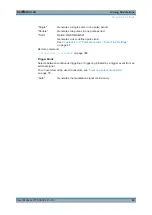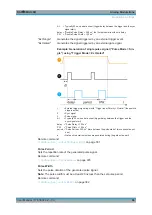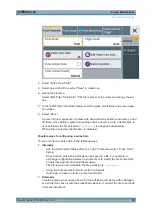
Analog Modulations
R&S
®
SMA100B
75
User Manual 1178.3834.02 ─ 03
A further LF generator for use as a second modulation source or to generate a
noise modulation signal
The noise generator supplies white noise with selectable bandwidth and level
distribution.
–
High-performance pulse generator
Generates double pulse or pulse train signals.
●
External modulation source
–
Amplitude, frequency or phase modulation signals are input at the EXT connec-
tor
–
Pulse modulation signals, at the PULSE EXT connector.
Signal output
You can perform the AM, FM and PhiM with the signal of any of the provided sources.
Moreover, you can combine two modulation signals and generate a two-tone signal.
Regardless of the signal source, the generated signal, can be output for further pro-
cessing in a downstream instrument.
Current configuration is indicated in the
log; the output signal routing can be changed, too.
Input and output connectors
Direction
Modulation
Connector
Required option
Output
Pulse generator
PULSE SYNC
R&S
SMAB-K22
Pulse generator
Loop through of pulse signal from PULSE
EXT
PULSE VIDEO
R&S
SMAB-K22
LF generator
LF
Pulse modulation form internal signal
External trigger or gate signal
*)
PULSE EXT
R&S
SMAB-K22/-K23
Input
AM, FM, PhiM
EXT 1/2
1)
R&S
SMAB-K720
Pulse modulation form external source
*)
PULSE EXT
2)
R&S
SMAB-K23/-K24/-K27
*)
External trigger signal and external signal for the pulse modulation cannot be used
simultaneously, because these signals are expected at the same connector PULSE
EXT. Signal polarity and impedance are the same for both signals.
Signal characteristics:
●
1)
The external modulation signal must have a voltage of US = 1 V (UEFF = 0.707
V) to achieve the displayed modulation depth and range.
The input voltage should not exceed 1 V, otherwise modulation distortions can
occur.
●
2)
The input shows some hysteresis with threshold levels of -0.5 V/5 V
The voltage must not exceed 10 V
Modulation Types and Signal Sources


